 Director of the Ohio Center for Sport Psychology Dr Jack Lesyk looks at the mental aspect of success on the sporting field, with The Nine Mental Skills of a Successful Athlete. A great read.
Director of the Ohio Center for Sport Psychology Dr Jack Lesyk looks at the mental aspect of success on the sporting field, with The Nine Mental Skills of a Successful Athlete. A great read.
Results matching “Bird”
 If you're getting ready for this year's Pure Tasmania Challenge, Mark Webber has a couple of great kayaking tips for you.
If you're getting ready for this year's Pure Tasmania Challenge, Mark Webber has a couple of great kayaking tips for you.
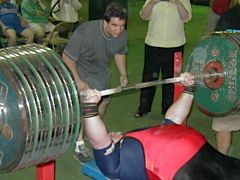 Two more sites for your daily reading pleasure :
Two more sites for your daily reading pleasure :
The Iron Chronicles is the training diary of a lifter who enjoys lifting anything that's heavy. Now, that's a sentiment I can definitely identify with.
Howz Training tracks the training of Personal Trainer, martial arts student and kettlebell afficionado Howie. Enjoy.
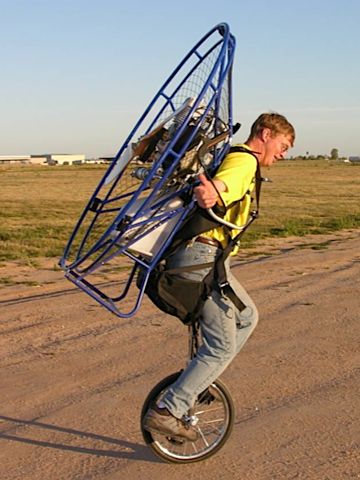
If you live in the US, it's National Bike Month (and 'Bike to Work Week' for many states).
 Via Digg : This is great (I only wish it was longer). The amazing Pilobolus Dance Theater troupe [streaming, 2.4mb .flv download].
Via Digg : This is great (I only wish it was longer). The amazing Pilobolus Dance Theater troupe [streaming, 2.4mb .flv download].
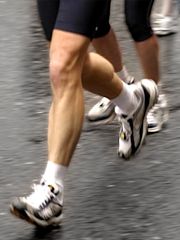 When I started working out (a little over 3 years ago) I was lucky enough to put in place several things that have held me in good stead up until now (as well as a number that didn't, but I'll just quietly ignore those). Here are 10 things that helped enormously :
When I started working out (a little over 3 years ago) I was lucky enough to put in place several things that have held me in good stead up until now (as well as a number that didn't, but I'll just quietly ignore those). Here are 10 things that helped enormously :
1. Set goals
Think about your reasons for exercising, and set goals that seem reasonable to you (you can always adjust these later as necessary). These goals will help enormously when it comes to keeping you on track; regardless of your motivation. Whether you want to be freakishly strong, shed a few excess pounds or simply have beach-worthy abs; goal-setting will help you on your way.
More info : Dan John has written many articles on goal setting, but this one's my favourite.
2. Keep notes
When I began blogging my workouts I was inspired by Kris Lindqvist's excellent site Under the Bar. Since first coming across that site I've noted many others that also contain a workout diary; one of the main reasons these continue to appear is that they're a great way of staying focussed, and eliciting feedback as desired.
Even if the idea of keeping a public site is a little too much for you to handle, keep notes in a private journal somewhere. A notebook (the paper kind, not a computer) is just fine.
More info : if you'd like to set up a workout blog - but are not quite sure where to start - head over to Training Syndicate. They'll help you set one up. The best part? It's free.
3. Work out at home (especially in the beginning)
Let's face it, gyms can be a little intimidating - especially if you're just starting out. Designate part of your house as your home gym (you really don't need much to get started, if there's enough space to lie down on the floor you can do quite a bit). You can always relocate to your garage/spare room/basement if the bug really bites.
More info :
from Stumptuous
from this site
4. Eat plenty
Personally, I don't believe it's possible to eat too much of the right food (of course you can always eat the wrong foods, and at the wrong times). Without getting heavily into nutrition - although if you want to later, that certainly isn't a bad thing - just steer clear of the things you already know are 'junk' (potato chips, greasy fast food, cake etc) and lean more toward a fruit + veg + lean meat meal plan.
As for timing, don't get stressed about the number of options and the seemingly endless supply of nutritional advice. You'll probably be hungry after working out, so get something ready. If you eat then, in addition to the usual 3 meals per day, you're well on your way.
More info : for a few great ideas that'll get you eating well in no time, head over to Dr John Berardi's Tailor Made Nutrition articles (part 1, 2, 3).
5. Get your rest
This is one of those things that will just feel right after you begin working out. If you work out regularly (no matter what sort of exercise you're doing, as long as it gets the blood pumping and makes you breathe a little deeper), you'll find that you sleep better. If you sleep deeper (and possibly longer), keep doing it - it's definitely a good thing.
Conversely, getting a better night's sleep will help your body recover from the workouts. If you can help it along a bit by skipping that late night cup of coffee, avoiding that late night re-run of Seinfeld on TV, or taking the occasional afternoon nap on the weekend; your body will thank you.
More info : there are number of great articles on sleep on this site. It's a great place to start.
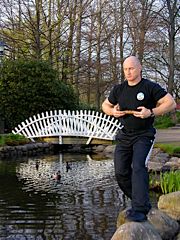 Via Rif's Blog : Each time I come across a piece by Paul Chek I am amazed at the ingenuity of this incredible character. This interview over on T-Nation (from January last year) explains just why.
Via Rif's Blog : Each time I come across a piece by Paul Chek I am amazed at the ingenuity of this incredible character. This interview over on T-Nation (from January last year) explains just why.
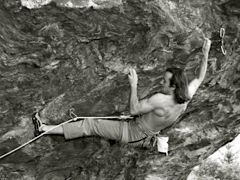 Dave MacLeod takes a brief look at a very interesting subject :
Dave MacLeod takes a brief look at a very interesting subject :
'Are there any great benefits to weight loss for climbers?'
With 13 years of hard climbing experience, and having recently shed a few excess pounds, his answer is certainly food for thought. Has anyone else here noticed a difference (when climbing) after weight loss?
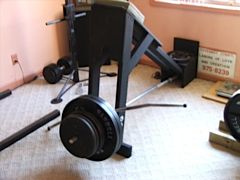 Gary Chandler is very much part of the growing network of DIY equipment enthusiasts. His latest creation, a home-made T-bar row machine, is superb.
Gary Chandler is very much part of the growing network of DIY equipment enthusiasts. His latest creation, a home-made T-bar row machine, is superb.
Over to Gary for a few details about its construction :
I used an old spin-on bar with an electrical cable hangar as my swiveling attachment point. The bar goes into a 4×4 with a 1-1/2" hole drilled into it for a pivot point. The box at the end allows some quarters to counterbalance the weight and keep the back end of the bar from coming up when the thing is loaded. The foam pad at the top is from a stereo box. The weight rest is an odd bracket from a
garage door opener. The nicest thing about this rig is that a simple shrug of the shoulders is all that is needed to lift the weight from
the rest, and it's only a couple of inches to the side (and a shrug) to park it, rather than waaaay off to the side, like some gym equipment.
I have since added a footrest, between the back box and uprights, using a piece of pipe and conduit clamps. The bar comes out for other
uses if needed. I'm pulling around 300 on this thing lately. Takes two quarters for the back balance when over 260.
A few of Gary's other works (which are equally brilliant) :
 Wooden Weight Tree
Wooden Weight TreeThis is made from just 2×4's and a piece of wooden closet rod, hammered into holes. You could use pipe if you don't have a rod to cut up. With weights set on top where those nickels are, you can put your chain through them and walk up to it and hook them to your belt at waist height. Very convenient.
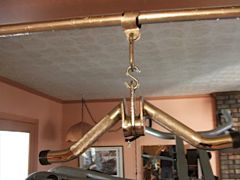 W-Bar Chin Rig
W-Bar Chin RigThis is for guys who get wrist pains from a straight bar. A piece of innertube for bar protection, a springclip and S-hook.
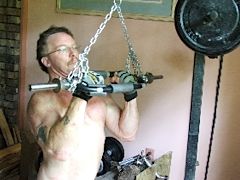 Hammer Press/Pull
Hammer Press/PullThis one speaks for itself, using a piece of chain or two. Bolts, or spring clips.
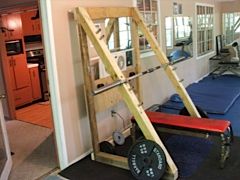 Squat Rack
Squat RackUsing 5" pieces of pipe, or as in my case, stainless steel curtain rod (1") set 2-1/2" deep into the 4×4's. 6' tall and 42" at the base. Yes, that is a drink holder (from a bicycle) and a window fan mounted over the stabilizer board. This will be used to hold attachments, as the weight collars you see there. Maybe some speakers?
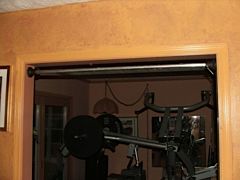 Chin-up Bar
Chin-up BarIf you have a cased opening you can spare, you can use an old weight bar or pipe, and simply drill into both sides of the jambs, and slip the bar into one side, then the other, and use bar collars to keep it centered. My old bar was rusted, so I used metal duct tape to cover it.
Brilliant.
 Via StrongLifts.com : Mehdi points to the blog of accupuncturist Ed Sanderson, who has some great articles on a number of aspects of health and nutrition. Well worth checking out.
Via StrongLifts.com : Mehdi points to the blog of accupuncturist Ed Sanderson, who has some great articles on a number of aspects of health and nutrition. Well worth checking out.
